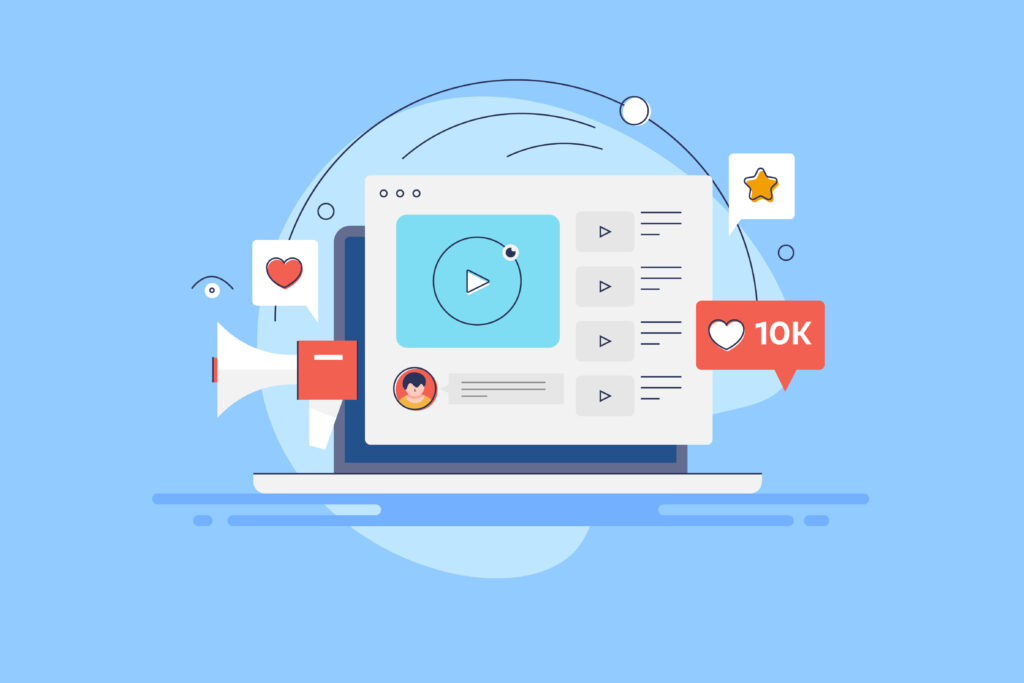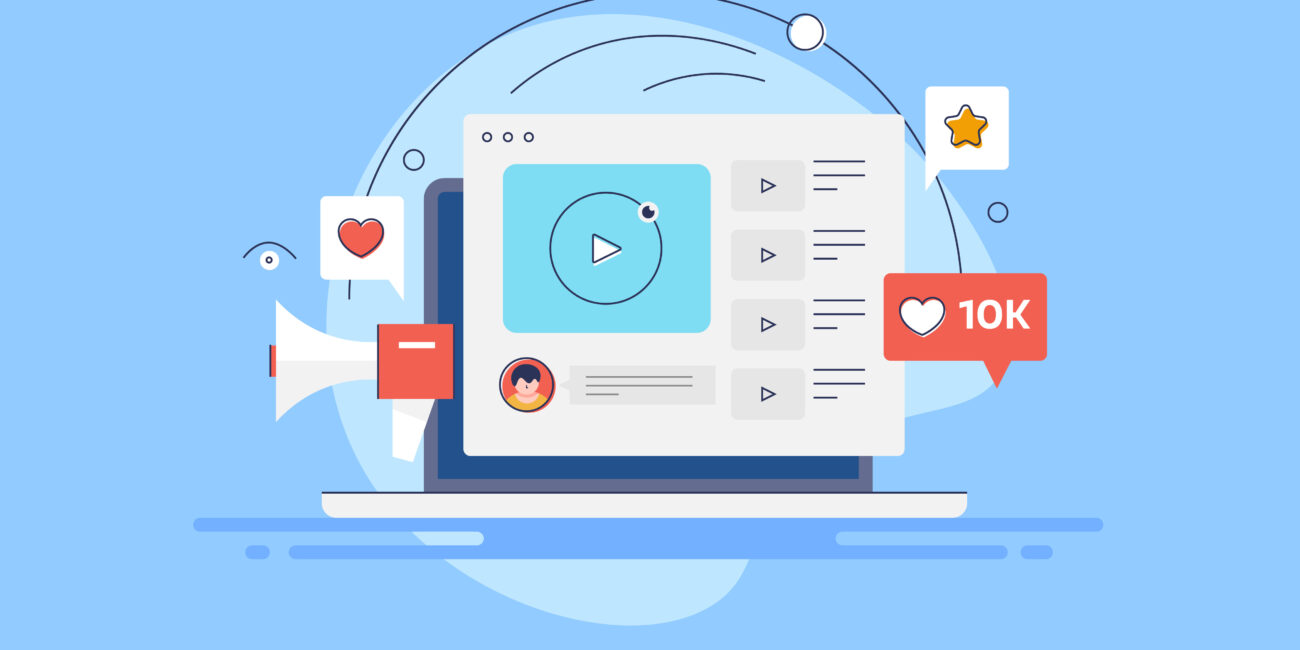Your digital marketing efforts work together to drive traffic to your website, but are you giving visitors a good reason to stay there? A static website or pages without valuable resources will make visitors bounce and never return again. This is an inefficient way to use your marketing budget because you aren’t bringing users deeper into the sales funnel. In fact, you are actively missing out on conversions that can improve your ROI.
There are multiple ways to make your website more engaging to keep people on your page. Consider adding a few of these elements that don’t require a large budget or extra resources to develop.

1. Provide Suggestions to Users
Navigating a website for the first time is like walking into a new building. Your users need to figure out where everything is and how to find the parts that meet their specific needs. If your website is confusing, overwhelming, or vague, some users might bounce.
Start by investing in eye-tracking heatmap software that shows how people video your website. You want to see what your users immediately look at and what they are missing. You might realize that a key page is getting overlooked because a flashy graphic or large button distracts users.
You can also test different layouts on your home page to see which styles appeal the most to users. For example, a car dealership might have three large panels, each directly to a different location on the website (new cars, used cars, and service). When a customer wants to schedule a maintenance appointment, they can cut through any unnecessary information and click directly to the service page to get what they need.
The best part about web design is that you don’t need to be an expert in human psychology or the web user experience. Instead, you can use heatmaps, A/B testing tools, and analytics software to look at how users visit your website and what they prefer. From there, it’s up to you to adjust to accommodate these needs.
2. Launch Free Tools and Resources
Millions of Americans rely on their cars to get to work, bring their kids to school, and run errands every day. However, there is still a lot of confusion about car buying, basic repairs, and routine maintenance. For example, the right down payment for a new car is hotly debated and often depends on your credit score. When it comes to maintenance, only 42% of Americans feel completely confident in changing a tiler, and only 26% know how to change their oil.
Not every car owner needs to be a financial expert or hobbyist mechanic. This is where you come in. You can make your website more interactive and useful by creating free tools that help people maintain their vehicles. Here are just a few free resources you can create (or set up with existing apps) to help your customers feel more confident in car ownership.
- Repair checklists: Create sections for maintenance checks, from checking tire pressure to replacing certain belts and coils. This can be broken down by period or mileage.
- Maintenance infographics: Create visual guides that show customers how to identify worn-out tires that need to be replaced or oil that needs to be changed. You can pair these with accompanying blog posts or videos.
- Cost estimators: Help customers determine if they can afford a car by estimating their monthly payments. They can submit their estimated trade-in credit, down payment, and credit score to get an idea – similar to mortgage calculators on real estate websites.
You don’t have to gatekeep these resources or ask people to submit their information to get results. While gated content is a common lead-generation tactic, it could drive more customers away than you realize. Instead, enjoy the long-term benefits to your brand of providing free support tools for customers who will then turn to you when they need a repair or are ready to trade in their old vehicle for a new one.
3. Invest in Live Chat Support
One way to immediately bring customers deeper into your sales funnel is with a live chat option on your website. With live chat, customers can ask questions and learn how to find the necessary answers. Instead of navigating your website on their own, a member of your support team can show them directly where to go. It’s the difference between reading a map and receiving directions on your GPS.
Live chat continues to win customers over across a variety of industries. More than half (52%) of consumers say they are likelier to remain loyal to a company offering live chat support. Furthermore, 79% of companies say offering live chat has positively affected their sales, revenue, and customer loyalty.
Keep in mind that you don’t necessarily need human customer service representatives chatting with customers. Instead, look into an AI chatbot that uses natural language processing (NLP) to understand conversational sentences and phrases. This will be more effective than a simple bot that only collects customer information and promises someone will call them later. If a query becomes too complex, the bot can hand the conversation off to a living representative.
Live chat can help customers who need it and can be an optional tool for users. Those who do not want to chat can look for other ways to get the answers they need.
4. Accommodate Different Media Preferences
Your target audiences have a lot of things in common, but one key difference is how they engage with various forms of media. Some people prefer watching videos, while others want to scan over a few paragraphs and get the big picture through your subheads. One way to make your website more engaging and keep users focused is by accommodating different preferences. Here are a few examples:
- People often prefer video content but watch videos on mute – usually because they are in public or multitasking. Adding captions increases their accessibility and watchability.
- Adding transcripts to the bottom of video or audio content (like podcasts) can boost your SEO exposure by allowing you to target specific keywords. This also accommodates people who prefer reading.
- Different generations have varying preferences. Adding audio recordings can appeal to younger web users while also increasing accessibility for users who are blind.
You work so hard to develop, edit, and publish your content. The last thing you want is for users to bounce because it’s not in a format they prefer. Taking the simple step of uploading a transcript or creating an audio recording will keep your users engaged.
5. Develop Clear Calls to Action
Have you ever visited a website and felt overwhelmed by the number of commands that greeted you? Too often, brands will add too many calls to action on the page, which can frustrate and annoy users. This isn’t intentional. The goal of these CTAs is to increase the chances that customers will respond to at least one of them. If web users don’t click the “Buy Now” button, they might subscribe to the newsletter or follow the brand on social media.
Evaluate your audience, their goals on your website, and your goals for them. From there, develop a clear call to action that you want them to follow. This doesn’t mean that you can only have one CTA, but it does mean that you need to be mindful of what you want your customers to do.
For example, what is more important: for a website user to look at your online inventory or to visit your showroom in person? This answer might depend on the type of car they are buying (new or used) or the landing page they are on. You might drive customers to look at your online inventory and then recommend visiting your showroom in person to test drive a particular model.
Evaluate your current website and make sure you aren’t taking a “spray and pray” approach to CTAs. Consider the customer’s journey, their needs at various stages, and how you can support them through the sales funnel – and beyond.

6. Evaluate Your Web Navigation
Another way to simplify your user experience while making it more effective is to evaluate your navigation – whether you have a top navigation bar or a hamburger-style menu for your mobile page. Use your website analytics to identify the most important pages for users (it’s unlikely that many customers actively seek out your company history or sales team bios) and make sure they are easy to get to. You can also test different menu options and see how your customers respond.
When customers are confused, they are more likely to bounce than to keep looking for what they need. Make sure you aren’t losing users because your menu is overly complicated with too many tabs and pages.
7. Track How Your Changes Affect Your Website
As you implement new ways to make your website more engaging, track your improvement efforts. Too often, companies will launch multiple changes simultaneously and won’t be able to tell which options had the biggest impact. Understandably, you want to grow your traffic immediately, but studying each new change will help you understand where you need to allocate your funds and which improvements weren’t as effective.
Additionally, avoid making changes just to follow marketing fads. Each new improvement to your website should come with key performance indicators (KPIs) that report whether the change was a success. For example, if you implement a live chat function, you could track the percentage of visitors that use it and the number of problems resolved through the AI tool. If you add transcripts to your podcast episodes and videos, you can track how those pages change from an SEO rankings and traffic perspective.
Very few companies have the luxury of publishing static websites that require minimal upkeep. The reality is that you should constantly work to improve your website, whether you are trying to keep up with SEO trends or want to drive more conversions.
Let Us Improve Your Dealership Marketing Efforts
Our clients often contact us because they are overwhelmed by the pressure of doing more with less. They aren’t sure how they can drive more traffic and generate more sales with the resources they have. However, we often find underperforming and unoptimized channels, which causes our clients to overspend. Our goal is to help them outsmart the competition without outspending them. If we can improve your campaigns, we can grow your sales while helping you save.
If your website or digital marketing channels aren’t operating at their peak levels, contact our team at J&L Marketing today. We are happy to look at your current efforts and develop a path for improvement.



